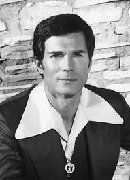Good 56º clear sky morning.
Another pretty clear sunny day yesterday. We warmed to 96º. Dude is always happy when it's sunny.....
Picture of the Day ... two trees sharing the same branch!
Interesting about chewing gum.........
Chewing gum is a soft, cohesive substance designed to be chewed without being swallowed. Modern chewing gum is composed of gum base, sweeteners, softeners/plasticizers, flavors, colors, and, typically, a hard or powdered polyolcoating. Its texture is reminiscent of rubber because of the physical-chemical properties of its polymer, plasticizer, and resin components, which contribute to its elastic-plastic, sticky, chewy characteristics.
The cultural tradition of chewing gum seems to have developed through a convergent evolution process, as traces of this habit have arisen separately in many of the early civilizations. Each of the early precursors to chewing gum were derived from natural growths local to the region and were chewed purely out the instinctual desire to masticate. Early chewers did not necessarily desire to derive nutritional benefits from their chewable substances, but at times sought taste stimuli and teeth cleaning or breath-freshening capabilities.
Chewing gum in many forms has existed since the Neolithic period. 6,000-year-old chewing gum made from birch bark tar, with tooth imprints, has been found in Kierikki in Finland. The tar from which the gums were made is believed to have antiseptic properties and other medicinal benefits. It is chemically similar to petroleum tar and is in this way different from most other early gum.
The Mayans and Aztecs were the first to exploit the positive properties of gum, they used chicle, a natural tree gum, as a base for making a gum-like substance and to stick objects together in everyday use. Forms of chewing gums were also chewed in Ancient Greece. The Ancient Greeks chewed mastic gum, made from the resin of the mastic tree. Mastic gum, like birch bark tar, has antiseptic properties and is believed to have been used to maintain oral health. Both chicle and mastic are tree resins. Many other cultures have chewed gum-like substances made from plants, grasses, and resins.
| Ancient civilization | Chewing gum precursor |
|---|---|
| Ancient Greece | Mastic tree bark |
| Ancient Maya | Chicle |
| Chinese | Ginseng plant roots |
| Eskimos | Blubber |
| Native Americans | Sugar pine and spruce sap |
| South Americans | Coca leaves |
| South Asia (India) | Betel nuts |
| United States (early settlers) | Tobacco leaves |
Although chewing gum can be traced back to civilizations around the world, the modernization and commercialization of this product mainly took place in the United States. The American Indians chewed resin made from the sap of spruce trees. The New England settlers picked up this practice, and in 1848, John B. Curtis developed and sold the first commercial chewing gum called The State of Maine Pure Spruce Gum. In this way, the industrializing West, having forgotten about tree gums, rediscovered chewing gum through the First Americans. Around 1850 a gum made from paraffin wax, which is a petroleum product, was developed and soon exceeded the spruce gum in popularity. To sweeten these early gums, the chewer would often make use of a plate of powdered sugar, which they would repeatedly dip the gum into to maintain sweetness. William Semple filed an early patent on chewing gum, patent number 98,304, on December 28, 1869.
The first flavored chewing gum was created in the 1860s by John Colgan, a Louisville, Kentucky pharmacist. Colgan mixed with powdered sugar the aromatic flavoring tolu, a powder obtained from an extract of the balsam tree (Myroxylon), creating small sticks of flavored chewing gum he named "Taffy Tolu". Colgan also lead the way in the manufacturing and packaging of chicle-based chewing gum, derived from Manilkara chicle, a tropical evergreen tree. He licensed a patent for automatically cutting chips of chewing gum from larger sticks: US 966,160 "Chewing Gum Chip Forming Machine" August 2, 1910 and a patent for automatically cutting wrappers for sticks of chewing gum: US 913,352 "Web-cutting attachment for wrapping-machines" February 23, 1909 from Louisville, Kentucky inventor James Henry Brady, an employee of the Colgan Gum Company.
Modern chewing gum was first developed in the 1860s when chicle was brought from Mexico by the former President, General Antonio Lopez de Santa Anna, to New York, where he gave it to Thomas Adams for use as a rubber substitute. Chicle did not succeed as a replacement for rubber, but as a gum, which was cut into strips and marketed as Adams New York Chewing Gum in 1871. Black Jack (1884), which is flavored with licorice, Chiclets (1899), and Wrigley's Spearmint Gum were early popular gums that quickly dominated the market and are all still around today.
Chewing gum gained worldwide popularity through American GIs in WWII, who were supplied chewing gum as a ration and traded it with locals. Synthetic gums were first introduced to the U.S. after chicle no longer satisfied the needs of making good chewing gum. By the 1960s, US manufacturers had switched to butadiene-based synthetic rubber, as it was cheaper to manufacture.
Easy Peach Cake is filled with the flavors of summer! Just one bite of this cake is all that you need to to fall in love with juicy peaches that are baked into this southern classic.
- 1 (15.25-ounce) package butter-flavored yellow cake mix
- 3/4 cup coarsely chopped pecans
- 1 (21-ounce) container peach pie filling
- 2/3 cup vegetable oil
- 2 eggs
- 1 teaspoon vanilla extract
- powdered sugar for sprinkling on top after cooked...
- Preheat oven to 350 º. Coat a 9- x 13- inch baking pan with cooking spray, set aside.
- In a large bowl, combine all ingredients; mix well. Pour batter into prepared baking pan.
- Bake 40 to 45 minutes, or until a wooden toothpick inserted in center comes out clean. Allow to cool slightly and serve warm, or when cool, cover until ready to serve
Historically this date.....
1914 – The last passenger pigeon, a female named Martha, dies in captivity in the Cincinnati Zoo.
.... interesting read, click on "passenger pigeon".
1939 – Adolf Hitler signs an order to begin the systematic euthanasia of mentally ill and disabled people.
1979 – The American space probe Pioneer 11 becomes the first spacecraft to visit Saturn when it passes the planet at a distance of 13,000 miles.
And births this date include...
1922 – Yvonne De Carlo, Canadian-born actress (d. 2007)


1939 – Lily Tomlin, American actress and comedian
1950 – Phil McGraw, American talk show host
1961 – Christopher Ferguson, American astronaut
All I know. Nuff said. Happy Sunday. Ciao.
xo Sue Mom Bobo
National No Rhyme (Nor Reason) Day on September 1st recognizes words which do not rhyme with any other words in the English language.
While September celebrates many random and capricious days, this observance focuses on specific words. Words that don’t rhyme with any other word are called refractory rhymes. Poets reason that avoiding these words helps keep their poetry consistent. However, refractory words only interrupt poems where rhyme and reason matter.
The less fickle poet takes on these challenging words. Toss out the rhymes. Say farewell to meter. Be whimsical and playful. The Jabberwocky never stopped Lewis Carrol. Dilly dally in a world of mishmash and find a verse that fits the spirit of the day. Deliver an envelope full of words directly up the chimney. Tilt the accent one way and lilt it another until the word fits in fluttery ways.
There need be no reason, nor rhyme for that matter. Not all poems do. Then again, you could dive deep like Alexander Atkins did in 2014 and search a little bit harder for the perfect rhyme. Check out his blog that stretches the edges of the language to fill the void left by refractory rhymes.
Some un-rhymable words in the English language include:
- Orange
- Month
- Silver
- Spirit
- Chimney
- Purple
- Woman
- Ninth
- Pint


















2 comments:
What a lovely shot of the trees reaching across to hold each other' hand. Put me in the mood to hear something romantic. So
Neil Diamond is singing the morning serenade. September Morning.
To finish the last of the fresh peaches here, they were pealed and filled an oversized tart.
God bless this month. Today and the 29 tomorrows which will become briefly today.
YUM! I just may have to make that peach cake and serve with vanilla ice cream for my bunco dessert.
That tree is amazing!
IF some would-be politicians get their way we would be heading for just that bill that Hitler signed! Hey, it has already started with the unborn! :( (Sorry, that is a hot button topic for me ) :(
Love Barry Gibb. I listen to the Bee Gees every day on my Alexa. :)
XO Trisha
Post a Comment